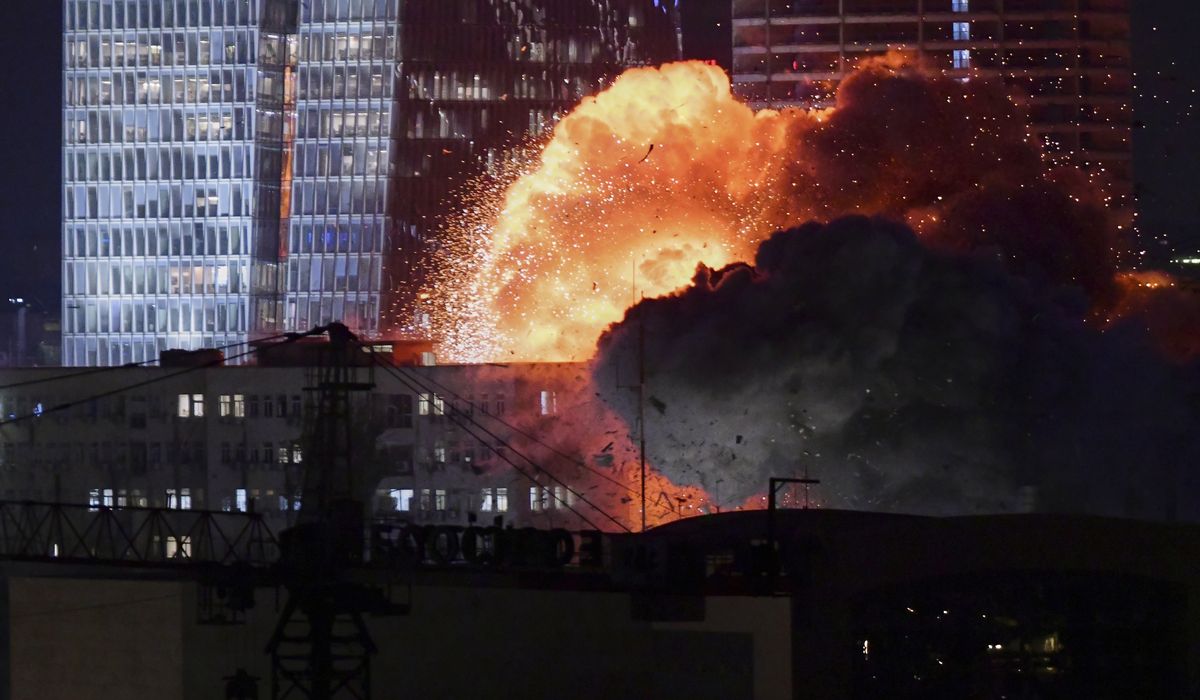


JERUSALEM — Israel’s multilayered air-defense system was tested Friday night as Iran launched ballistic missiles at Israel, with some reportedly landing in the city of Tel Aviv.
Israel’s military said it had intercepted the vast majority of the missiles but that some left “a few impacts on buildings.” An Associated Press reporter saw smoke rising in Tel Aviv after an apparent missile strike. A Tel Aviv area hospital said it was treating 15 injured civilians.
The attack was a stiff challenge for Israel’s air-defense system, which has intercepted projectiles fired from Gaza, Lebanon, Syria, Iraq, Yemen and Iran since the start of the war on Oct. 7, 2023. They have ranged from short-range rockets to medium-range missiles to attack drones to ballistic missiles like those fired Friday night.
U.S. ground-based air defense systems in the region were helping to shoot down Iranian missiles, said a U.S. official who spoke on condition of anonymity to discuss the measures.
But the vast majority of Israel’s air defense over the past year has been carried out by Israel itself. Over the decades, Israel has developed a sophisticated system capable of detecting incoming fire and deploying only if the projectile is headed toward a population center or sensitive military or civilian infrastructure. Israeli leaders say the system isn’t 100% guaranteed, but credit it with preventing serious damage and countless casualties.
Here’s a closer look at Israel’s multilayered air-defense system:
SEE ALSO: China criticizes Israeli strikes on Iran, warns of ‘potential grave consequences’
The Arrow
This system developed with the U.S. is designed to intercept long-range missiles, including the types of ballistic missiles Iran launched on Tuesday. The Arrow, which operates outside the atmosphere, has also been used in the current war to intercept long-range missiles launched by Houthi militants in Yemen.
David’s Sling
Also developed with the U.S., David’s Sling is meant to intercept medium-range missiles, such as those possessed by Hezbollah in Lebanon. It has been deployed on multiple occasions throughout the war.
Iron Dome
This system, developed by Israel with U.S. backing, specializes in shooting down short-range rockets. It has intercepted thousands of rockets since it was activated early last decade — including thousands of interceptions during the current war against Hamas and Hezbollah. Israel says it has a success rate of over 90%.
Iron Beam
Israel is developing a new system to intercept incoming threats with laser technology. Israel has said this system will be a game changer because it would be much cheaper to operate than existing systems. According to Israeli media reports, the cost of a single Iron Dome interception is about $50,000, while the other systems can run more than $2 million per missile. Iron Beam interceptions, by contrast, would cost a few dollars apiece, according to Israeli officials — but the system is not yet operational.
• This story was originally published on Oct. 2, 2024. It was updated Friday.
